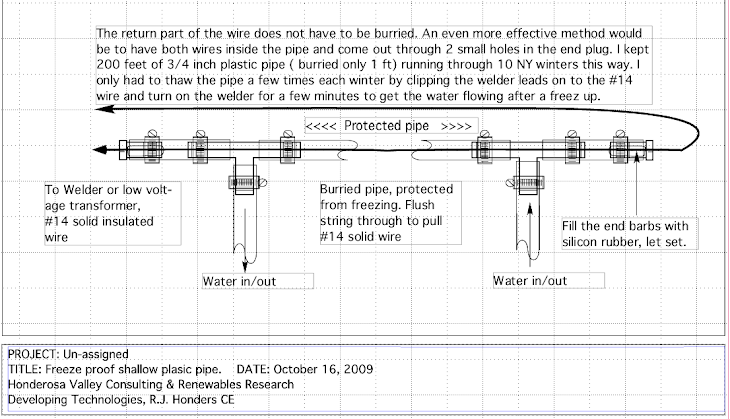Net Meter Micro Hydro – The Road to Energy Independence
By Robert Honders, Honderosa Valley Consulting
Net metering is the single most effective policy government can implement to promote renewable energy derived from all sources. Why exclude waterpower? If net metering were extended to all small scale (under 25KW) hydro sites, we would see renewed interest in the restoration of thousands of micro hydro sites that have been abandoned during the times of cheap oil. Many of these sites could be made productive again with lower investments because the infrastructure (dam, penstock, water supply) may still be intact. There is no valid reason to treat one renewable energy source any differently than another. We need them all to pave the road to energy independence.
The advantages of a grid connection include energy storage and vastly simplified control of frequency & voltage. Essentially the site runs wide open and just pushes energy into the grid at the grid voltage and frequency. It is analogous to you helping a freight train by pushing on the back of it. You won't be able to change its speed at all, even if your efforts are doubled, or stopped altogether. In other words, your energy input can fluctuate, but the train stabilizes everything just as the grid stabilizes relatively small energy inputs.
The simplest way to get grid-connected and reap these stabilizing benefits is through net metering. Net metering is accomplished using a single-bidirectional meter, which is already in place on all grid-connected homes. But beware! The newer electronic meters are programmed by the utility company to ignore the direction of the energy flow. Thus you can end up paying for the energy that you send to the grid! The power company prevents small energy producers from sharing the energy they generate with their neighbors and turning their own meter backward without permission. (Older spinning disk meters were not programmable in this way. The worst they could do to you is stand still while you were supplying power, and spin forward as you used power.)
To get grid connected with your hydro powered induction generator (cheapest, robust and most common) you’ll need to use an ‘inter-tie protection relay’ like the Beckwith M-3410. The relay monitors the grid / utility (not your generator) for any type of anomaly, like ‘grid down’, voltage or frequency too low / high etc. If any grid anomaly occurs the relay disconnects your micro hydro output from the grid for their protection. After grid power is restored the relay monitors the grid and if the grid has been normal for 5 minutes it will re-connect your micro hydro. You will need to wire an auxiliary contactor to hang a dump load (space heater will do) on your induction generator while it is disconnected from the grid to prevent your output voltage from rising too high. Below you’ll find the diagram for a system like this. Double click to enlarge.
Once your utility has inspected and tested your grid inter-tie for proper operation, AND if your state law has hydro power included in the net metering law, then you can ask your utility company to re-program your meter so you can share your excess power with your neighbors and run your meter backwards. Net metering makes it possible to ‘store’ your excess energy in the grid instead of in batteries, and returns energy to you when you need it, perhaps during a dry August, and at the same price.
So let’s have NET METERING FOR ALL RENEWABLE ENERGY be the law of the land!











